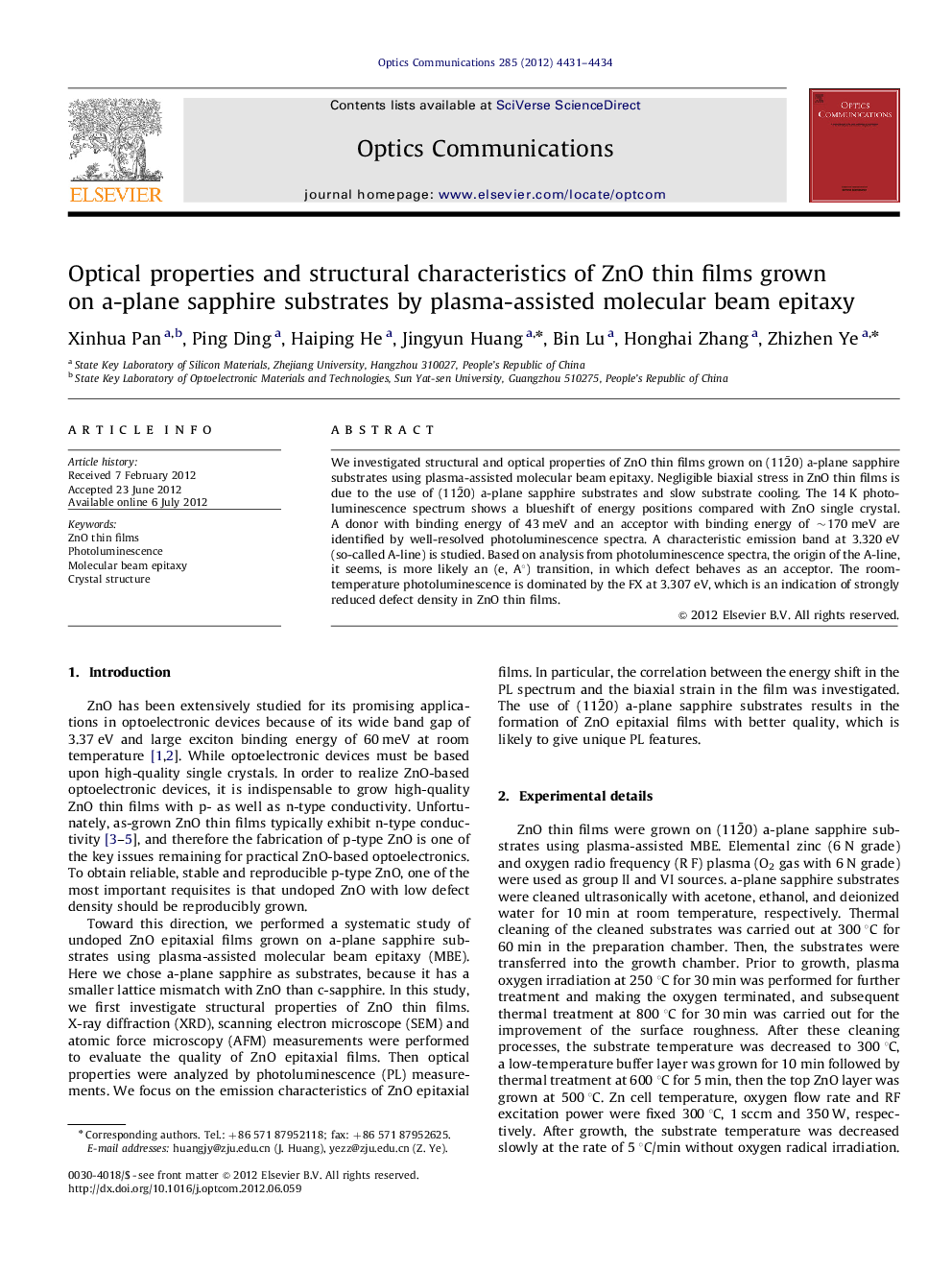| Article ID | Journal | Published Year | Pages | File Type |
|---|---|---|---|---|
| 1535967 | Optics Communications | 2012 | 4 Pages |
We investigated structural and optical properties of ZnO thin films grown on (112̄0) a-plane sapphire substrates using plasma-assisted molecular beam epitaxy. Negligible biaxial stress in ZnO thin films is due to the use of (112̄0) a-plane sapphire substrates and slow substrate cooling. The 14 K photoluminescence spectrum shows a blueshift of energy positions compared with ZnO single crystal. A donor with binding energy of 43 meV and an acceptor with binding energy of ∼170 meV are identified by well-resolved photoluminescence spectra. A characteristic emission band at 3.320 eV (so-called A-line) is studied. Based on analysis from photoluminescence spectra, the origin of the A-line, it seems, is more likely an (e, A°) transition, in which defect behaves as an acceptor. The room-temperature photoluminescence is dominated by the FX at 3.307 eV, which is an indication of strongly reduced defect density in ZnO thin films.
